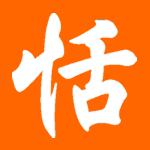The caption of this tattoo was "My first tattoo - It means 'Warrior' in Chinese".
Even though the English translation may be correct, but the tattoo itself is not. The character 武 is missing a small horizontal stoke. Usually "warrior" is translated as 武士.
武 = military; martial, warlike


I recently learned that the part that looks like "止" in the character "武" implies "legs" and the rest depicts "armor". So, warrior.
ReplyDeleteWell, then the tatto should be a crippled warrior.
Tian, you had your email displayed earlier, but I can't seem to find it now. I have a tattoo for you to look at.
ReplyDeletetiangotlost at gmail dot com
ReplyDeleteAt least this one can be repaired.
ReplyDeleteYeah, this character is definitely wrong, though I was always under the impression that "武" meant more like martial arts, as in "武功" (wu3 gong1 in Mandarin). Either way, means the same thing.
ReplyDeleteyou dork. 武 by itself means military in both Japanese and Chinese. 武士 means samurai in Japanese. Warrior is 戦士 in Japanese. Warrior is 武士 or 勇士 in Chinese.
ReplyDelete"止" means to stop. To break-up the word wu, it is "止" and 戈 (ge). "ge" is an ancient weapon, but used to descript conflict or fight in this context. There is a saying 大动干戈. Meaning, a big conflict or fight. So the word wu consist of the stop, and conflict or fight. As the saying goes, 止戈为武. The actual spirit of Material Art is not in the fighting or creating conflict but to stop it.
ReplyDeleteRegarding Todd's comment above:
ReplyDelete武士 and 勇士 are both used in Japanese, as well.
The former means 'warrior,' but usually refers specifically to samurai. The latter connotes some degree of heroism or bravery (as in 勇者).